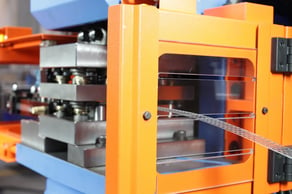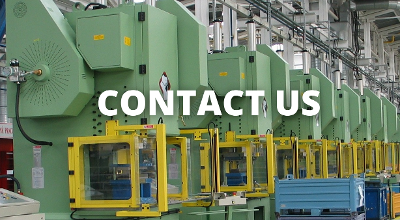Inefficient and outdated stamping equipment can cause production bottlenecks in your stamping operations. These bottlenecks can result in significant downtime and backlogs, which we all know can affect your bottom line in a significant way. One of the most common culprits is the use of fixed-stroke mechanical presses that are only optimal for the type of forming for which it was designed.
The Hidden Cost of Fixed-Stroke Mechanical Presses
Repairs & Downtime Leading to Bottlenecks

In the metal forming industry, efficiency is one of the most critical factors. Yet, many shops are handicapping their productivity levels by relying on separate fixed-stroke mechanical presses for different types of forming. This approach may seem perfectly logical, but it introduces significant vulnerabilities—primarily in the form of increased downtime due to maintenance, repairs, or the need for press replacement.
Real-World Scenario
Consider this typical scenario in a contract job shop equipped with one blanking press and one punch press. When the blanking press unexpectedly fails, operations grind to a halt with no immediate backup available. Fixed-stroke presses, by their design, lack the flexibility to optimally adapt to varying tasks, leading to operational bottlenecks and forced downtime during critical repair periods.
Unfortunately, a fixed-stroke press does not offer the versatility of an adjustable stroke press. So, when one press is down, you have no backup. This causes backlogs and forced downtime while you wait for repairs or a replacement.
The Implications of "Making a Job Work"
If you operate with the mindset of "we purchased a press with a longer stroke, so we can have the flexibility to run multiple jobs in one press" you could be leaving money on the table and exposing yourself to the problems that were just discussed above. Using a longer stroke than necessary for a given application can lead to the following:
- Increased tool wear and premature breakages thanks to the higher impact velocity that comes from using a longer stroke.
- More dynamic forces within the press frame can drastically shorten the overall lifespan of your press.
- Less than optimal production caused by the increased time needed for the ram to travel the necessary distance to form the part.
In summary if you are using a stroke that is longer than necessary you could significantly be affecting your bottom line and leaving money on the table due to unnecessary wear and tear on your equipment.
The Strategic Solution?: Embracing Adjustable Stroke Press Technology
The transition to adjustable stroke technology represents more than just an operational upgrade—it's a strategic move towards improved efficiency, flexibility, and resilience in your metal stamping operations. By reducing bottlenecks associated with fixed-stroke limitations, you not only streamline your production processes but also position your shop to better respond to the shifting demands of the market.
Leveraging Adjustable Stroke Presses for Operational Efficiency
- More efficient floor space utilization:
By replacing several fixed-stroke presses with a single adjustable stroke press, you can increase your available floor space. This space can then be repurposed for additional operations, storage, or even new machinery, further enhancing your shop's operational capabilities.
- Maximizing the return on your investment:
With an adjustable stroke press, you can produce more parts per minute and reduce the wear on the press frame and tooling from an unnecessarily long stroke, resulting in less downtime and repair costs.
See how an adjustable stroke press can improve your ROI
Conclusion - Make Fixed-Stroke Presses a Thing of the Past
In summary, while the investment in an adjustable stroke press may seem significant, the long-term benefits—operational flexibility, reduced downtime, enhanced floor space utilization, and a stronger ROI—make a compelling argument. As the metal forming industry continues to evolve, shops that embrace these versatile technologies will benefit from greater efficiency and productivity.
To learn more about how an adjustable stroke press can transform your operations and mitigate production bottlenecks, visit our website or contact us for a personalized consultation. Discover the difference flexibility can make in your metal forming success.
